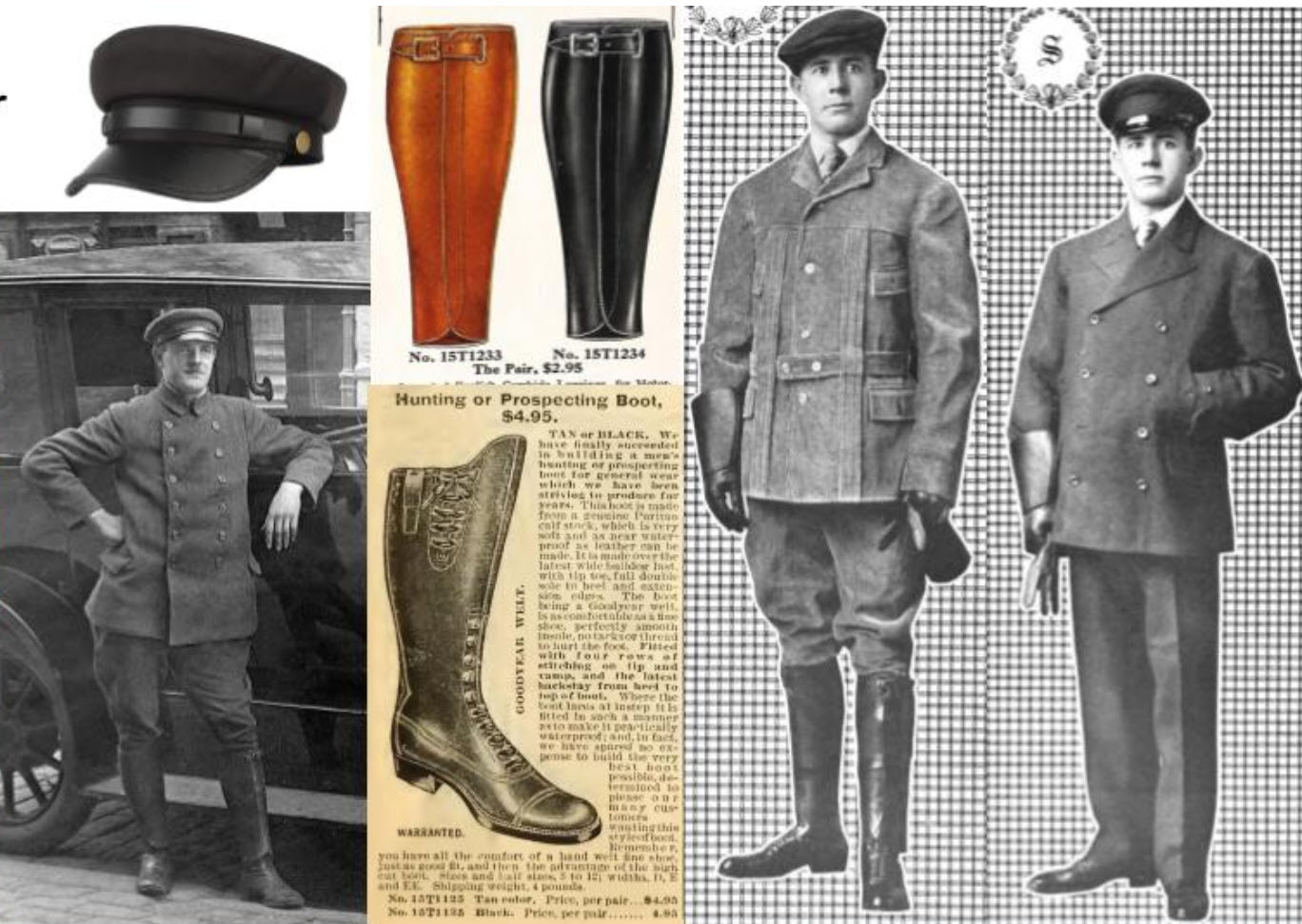The Automobile College of Washington
In addition to the Pierce-Arrow factory in Buffalo, New York and the Dodge Hamtramck and Hudson Motor Car factories in Detroit, Michigan, Lewis Reed received automotive training at The Automobile College of Washington.
The Automobile College of Washington was organized in 1909 for the purpose of training young men to fill positions as automobile engineers. The school had a repair department and a machine shop with modern motors for demonstration, where each student was taught in the mechanical construction, use, operation, and repair of the very latest four-cylinder automobiles. Some of the cars used in the school were the Washington A-1 Touring Car, Pope Tribune, Ricketts Model G 6-cylinder, Peerless 35hp, and Mitchell 25hp.
The November 7, 1909 edition of The Washington Times announced that the school was the pioneer institution of its kind in the city. Young men without previous experience were taught to be chauffeurs to not only drive, but also maintain and repair the automobiles. The Automobile College of Washington was more than likely the institution where Lewis Reed received his chauffeur training.
Lewis Reed as a Chauffeur-Mechanic

Two ladies with parasols are sitting in the landaulet section of an early Pierce-Arrow limousine, while chauffeur Lewis Reed tends to the motor. The rear portion of the limousine is partitioned from the driver with a glass shield, and covered by a convertible top, which you can see is currently in the lowered position behind the ladies. Photo taken circa 1910.
The year is 1910 and you’ve just purchased a brand new automobile. To show it off for the first time, you’ve hired a knowledgeable chauffeur. You sit on a padded seat while the chauffeur tends to the engine. Though it takes a while to start up, your new ride can reach around 37 mph. The ride is a bumpy one, and you could probably walk faster than the car travels. Ooops! One of the wheels has popped off as you go around a bend. Chauffeurs were not only trained to be proficient with their driving skills, but they also had to keep the luxury automobiles in tip top shape, which is where Lewis Reed’s mechanic training – a vital skill in the early days of motoring – would have come into play.
Lewis Reed understood automobiles. He knew how they worked and how to fix them. He loved cars and anything associated with them. Prior to World War I, Lewis Reed’s love of automobiles led him to becoming a chauffeur. At the dawn of the early 20th century, society was transitioning from horse-drawn carriages to automobiles. Having grown up in a blacksmith family, he was well positioned to move to the new technology. The 1910 census indicates that 23-year-old Lewis Reed was working as a machinist. Lewis worked as a chauffeur from roughly 1910-1914, before he became involved in the business of selling and repairing automobiles.
Chauffeur-mechanics of the early 1900s were the first group to earn a living working on automobiles. Wealthy people employed private chauffeur-mechanics to not only drive, but also maintain and repair their large, expensive automobiles — rather than learn to do it themselves. The vehicles of the time came with mobile toolboxes often resembling a small hardware store tucked away in the trunk. The early 1900s Pierce-Arrow toolkit included extra intake and exhaust valves, not exactly your typical roadside service. During the height of travel season, Spring through Fall, oil changes were required almost weekly. As you can easily surmise, there had to be someone to keep track of all of the maintenance and upkeep of the vehicle as well as the daily driving.
The novelty of the motor car led many manufacturers to create clothes that were specifically marketed for the automobile driver and his or her passengers. Lewis Reed wore a typical chauffeur’s uniform of the time. His motoring outfit was taken from the military uniform, combining a single or double breasted hip length coat and a pair of knicker pants with tall boots and a traditional driver’s cap. Gauntlet gloves were worn while driving and goggles were worn in open air cars. Goggles obviously protected ones’ eyes from flying pebbles and dirt, but heavy-weight boots ensured that the driver could, when necessary, get out to push a stalled car or fix a punctured tire.
Savvy marketers were especially quick to recognize that automobile owners had “more money to spend” than non-car owners. As these marketers gleefully noted, car owners “spend…more freely than non-[car] owners.” Convincing these customers of the need for special clothes was not too difficult. In fact, some car owners spent nearly as much on their motoring clothes as they did on their cars. The ladies in the photograph with parasols could have used them as an attractive way of shielding themselves from the sun’s rays, or to keep the dust from the dirt roads off their faces.
In October of 1915, Lewis Reed opened his Dodge dealership on Rockville Pike, less than one year after the first-ever Dodge automobile rolled off the assembly line. Reed Brothers Dodge provided “wheels” to many families for most of the 20th century during a period when the number of motorcars was rising rapidly throughout Maryland. Few businesses survived the Great Depression and two world wars, but Reed Brothers Dodge eventually emerged from the gauntlet of the 20th century as the oldest Dodge dealership in Maryland history and one of the oldest in the United States.












Recent Comments